Nowadays, privacy is hard to come by. Large corporations seem to know us better than we know ourselves, and very little can be kept a secret. Sometimes though, certain files need to be kept private, and Macs are great at helping you hide the things you want hidden. Below, you’ll find the 10 best ways to keep your private folders and documents hidden and secure.
Enable FileVault
FileVault is arguably the easiest and most trusted way to keep files safe on your Mac. When activated, FireVault fully encrypts your startup disk, preventing unauthorised access to your documents and data. To turn on FireVault, go to System Preferences from the Apple menu. From there, click Security and Privacy, then select the FireVault tab. Finally, click the lock, enter your administrator name and password and click the Turn on FileVault button.
If you have more than one user on your Mac, you’ll be asked to choose which users are allowed to unlock the startup disk. To do this, click Enable User when the option becomes available, and then enter the password for that account. Remember, each user you enable will have access to your Mac from startup.
 Be careful with FileVault though. If you’re someone who often forgets or misplaces passwords, encrypting your startup disk using Apple’s service may not be the wisest choice. Due to the encryption technique used when activating FileVault, if you lose access to your account, your data will not be recoverable.
Be careful with FileVault though. If you’re someone who often forgets or misplaces passwords, encrypting your startup disk using Apple’s service may not be the wisest choice. Due to the encryption technique used when activating FileVault, if you lose access to your account, your data will not be recoverable.
Hide everything in the Library
If you’re running OS X Mountain Lion or above, /Library is a great place to hide your private files, because it’s automatically hidden until you choose to make it visible.
To access the Library, click on the Finder’s Go menu and hold down the Option key. When you do, a new row will appear in the menu titled Library, click that and you’ll be presented with a window full of folders that contain important system and application data. Unless you know exactly what you’re doing, I’d recommend staying out of these folders, because any alterations to files within them could stop certain applications from running properly.
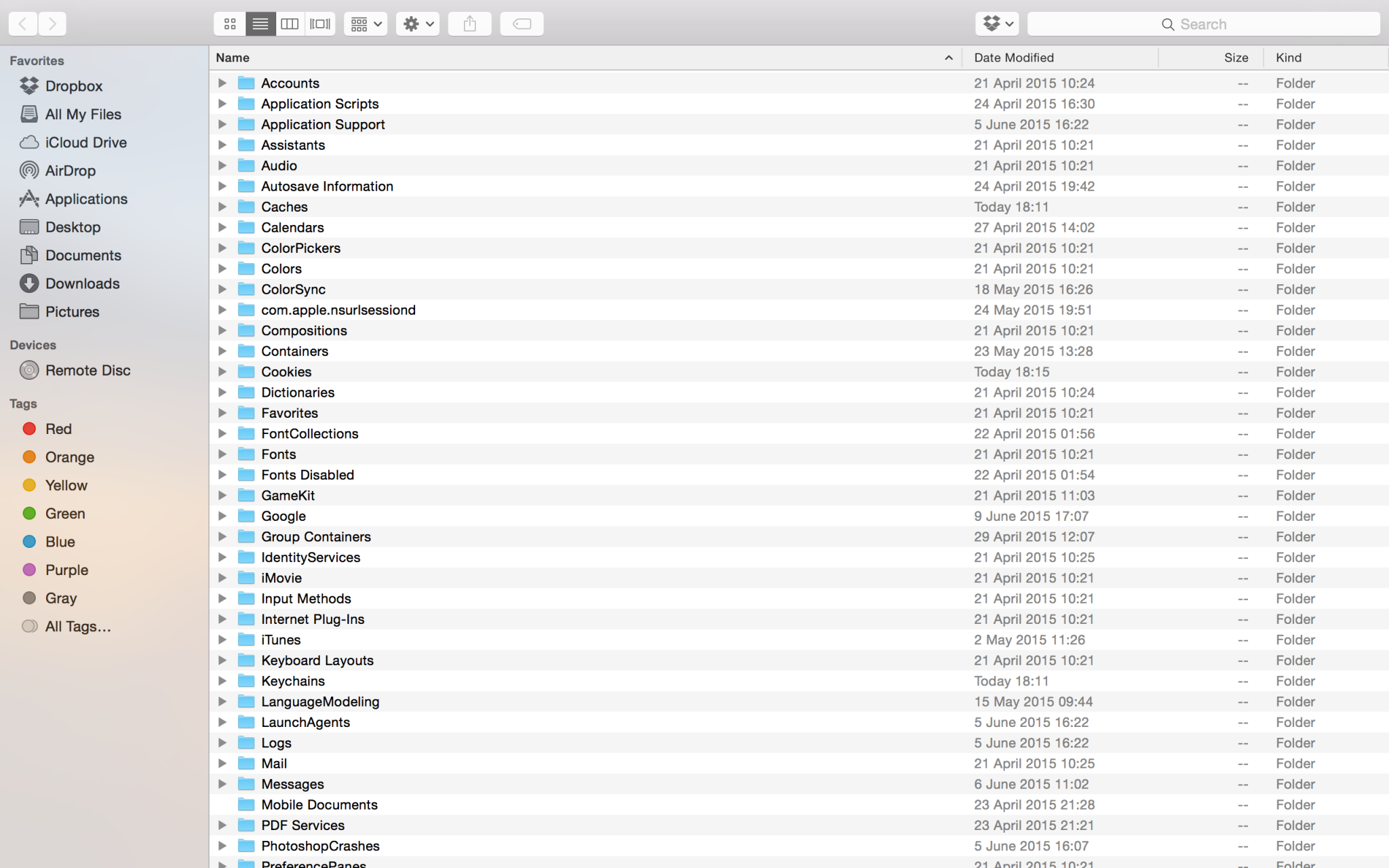 However, you’re free to add any files or folders you wish to the Library, and they’re hidden until someone decides to look there. It’s not the most secure option, but it’s simple and should keep out most intruders.
However, you’re free to add any files or folders you wish to the Library, and they’re hidden until someone decides to look there. It’s not the most secure option, but it’s simple and should keep out most intruders.
Type instruction code in to Terminal
Using Terminal is something many Mac users shy away from; the program is a complex piece of kit, and not everyone will find a use for it. However, if you know your stuff when it comes to Terminal, there are two methods for hiding your private files and folders.
chflags hidden
- Open Terminal,
- Type chflags hidden
- Drag any file or document you want to hide into the Terminal window, or type in the file path manually
- Press the Enter key
Any files you hide won’t be moved from their original locations, but they will be hidden until you access them via the Go To Folder dialog (Command-Shift-G) in Finder and typing in their full paths. To unhide any file or document, go back to Terminal and type chflags no hidden followed by the file or document path.
mv filepath .newfilepath
- Open Terminal,
- type mv filename .filename (be sure to replace filename with the path of the file you wish to hide, and then replace .filename with the new, renamed file’s path)
- Press the Enter key
Using this command renames the original file to place a period at the beginning of its name. By doing so, the file is automatically hidden because of the fact files with periods at the beginning of their names are hidden in OS X. As with the previous code, you can access the hidden folder by using the Go To Folder shortcut, and unhide the file by repeating the command with the file paths reversed.
Apple developer tools installed? Set visibility attributes to invisible
If you’re someone who has Apple’s developer tools installed, there’s a third way you can use Terminal to hide files and folders on your Mac.
- Open Terminal
- Type setfile -a V followed by the name of the file or folder you want to hide
- Press Enter
Entering the above command sets the visibility attribute of the file or document to invisible. To reverse the command, repeat the process but include a lower-case v: setfile -a v
Install a third-party application
MacPaw’s Hider 2
Free to try. £16.99 for one license, £26.99 for two licenses, £37.99 for three licenses.
 Far and away the best looking application on this list of three, Hider 2 has been reviewed and recommended by writers from websites such as TUAW, MacWorld and LifeHacker; it’s also recommended by us here at ChrisWrites.
Far and away the best looking application on this list of three, Hider 2 has been reviewed and recommended by writers from websites such as TUAW, MacWorld and LifeHacker; it’s also recommended by us here at ChrisWrites.
Surprisingly easy to use, Hider 2 encrypts the files and documents you wish to keep private and stores them in a secure vault. The vault is password protected of course, and you’re asked to set this password when you first start the app after installing it.
Hider’s easy drag-and-drop system allows you to pick and choose which files and documents you want to encrypt, but its distinctiveness comes from the fact you can also make any encrypted file invisible in Finder. The double layer of protection, both from encryption and invisibility, makes Hider 2 a highly recommended application if you want to keep your important files private and safe.
ApiMac’s Secret Folder
Free to try. £17.55 for a single user license, £35.11 for a single site license.
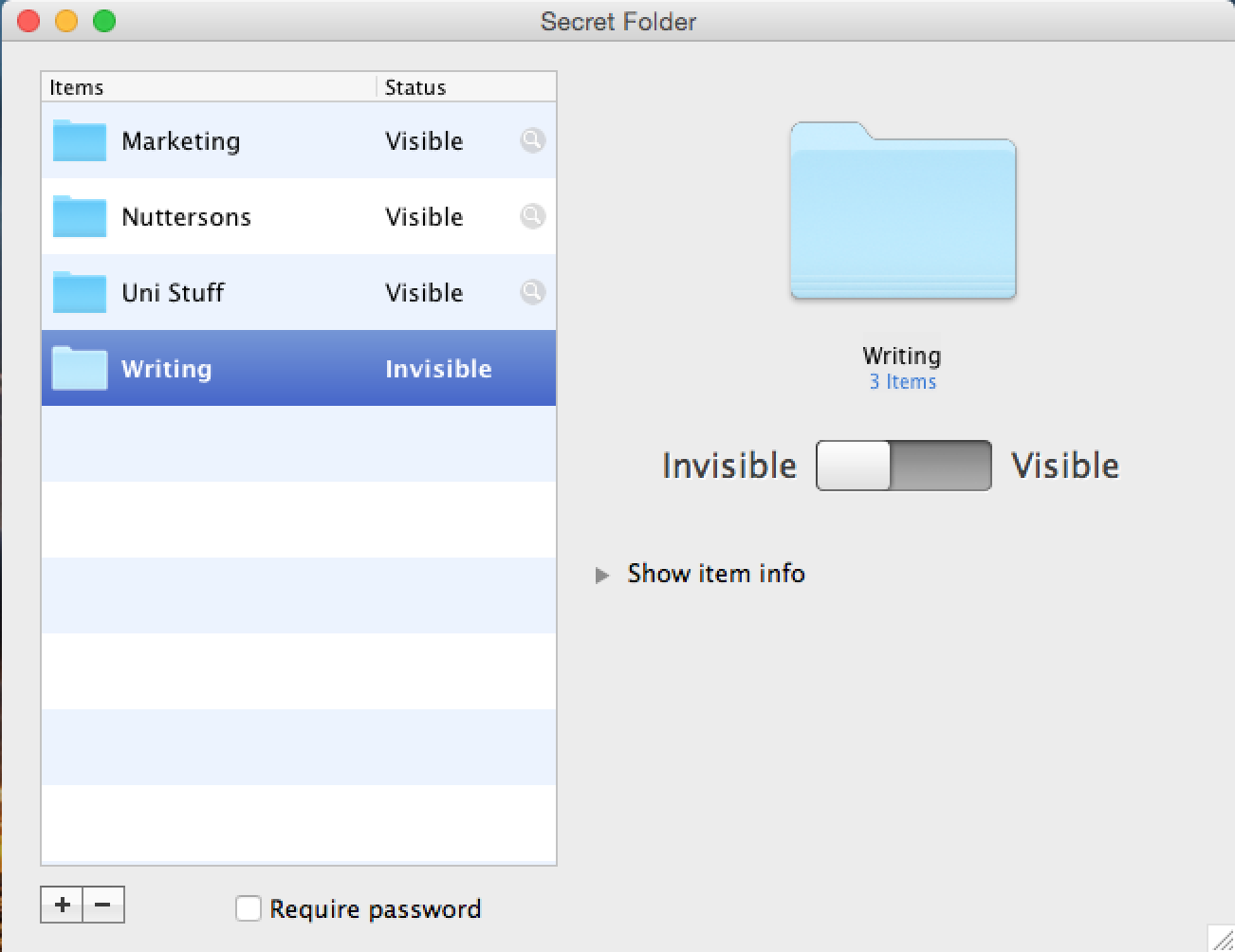 If you’re not in the business of encrypting files and folders, ApiMac’s Secret Folder allows you to easily hide private files with a single click.
If you’re not in the business of encrypting files and folders, ApiMac’s Secret Folder allows you to easily hide private files with a single click.
Of course, we’ve already discussed ways to hide files rather than encrypt them, so Secret Folder is essentially an app that provides a simple way to make your files and documents invisible, and not much more. The list view is handy though, letting you see at a glance exactly what you’ve chosen to hide.
However, if you’re someone who enjoys the fact individual pixels are virtually impossible to see on a Retina display, Secret Folder may not be for you – it’s yet to optimise itself for use on Retina displays, as you can see from the pixelated text on the above image.
Put your files in another User Account
While not the safest, putting your files in another user account is definitely one of the easiest options on this list. So, if you’re not too keen on encrypting your disk, using Terminal or downloading third-party applications, create a new user account and put your private files and documents in there.
To create a new user account, open System Preferences and head to Users & Groups. Follow the usual procedure of clicking the lock and entering your administrator name and password, and then click the ‘+’ (plus) button below Login Options. A new account window will drop down, and from there you’re asked to name the account, and give it a password.
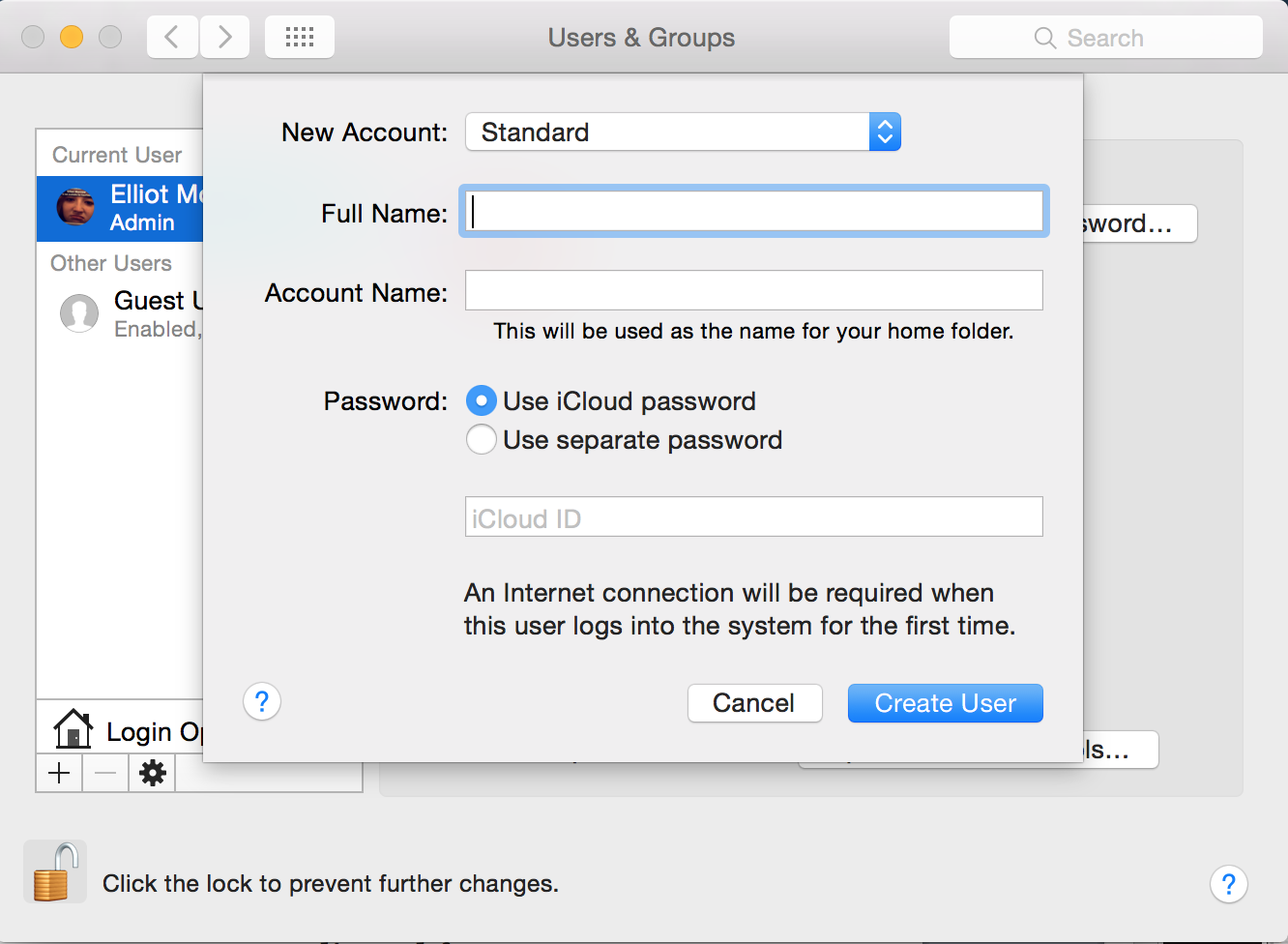 Once you’ve created a new account, you can start moving your folders and files over to it. This is a useful way of ensuring your files and documents are protected from those who have access to your account, but just be aware that logging in and out of accounts can be an annoyance for some. And, if you often leave your Mac unattended around the house, make sure to lock your private account before moving.
Once you’ve created a new account, you can start moving your folders and files over to it. This is a useful way of ensuring your files and documents are protected from those who have access to your account, but just be aware that logging in and out of accounts can be an annoyance for some. And, if you often leave your Mac unattended around the house, make sure to lock your private account before moving.
Let’s keep it simple – just rename the file or folder
If all of the above seems too complicated for you to even bother attempting, then let’s keep it simple: just rename the file or folder you wish to keep private.
I’d recommend not naming it something along the lines of ‘Private Folder’ or ‘KEEP OUT’ though, because that would only encourage preying eyes to open the files and folders you so desperately want to remain private. Innocent names work best, which means a folder called ‘H0liday snaps 2015’ most likely won’t be accessed by anyone you wish to keep out.



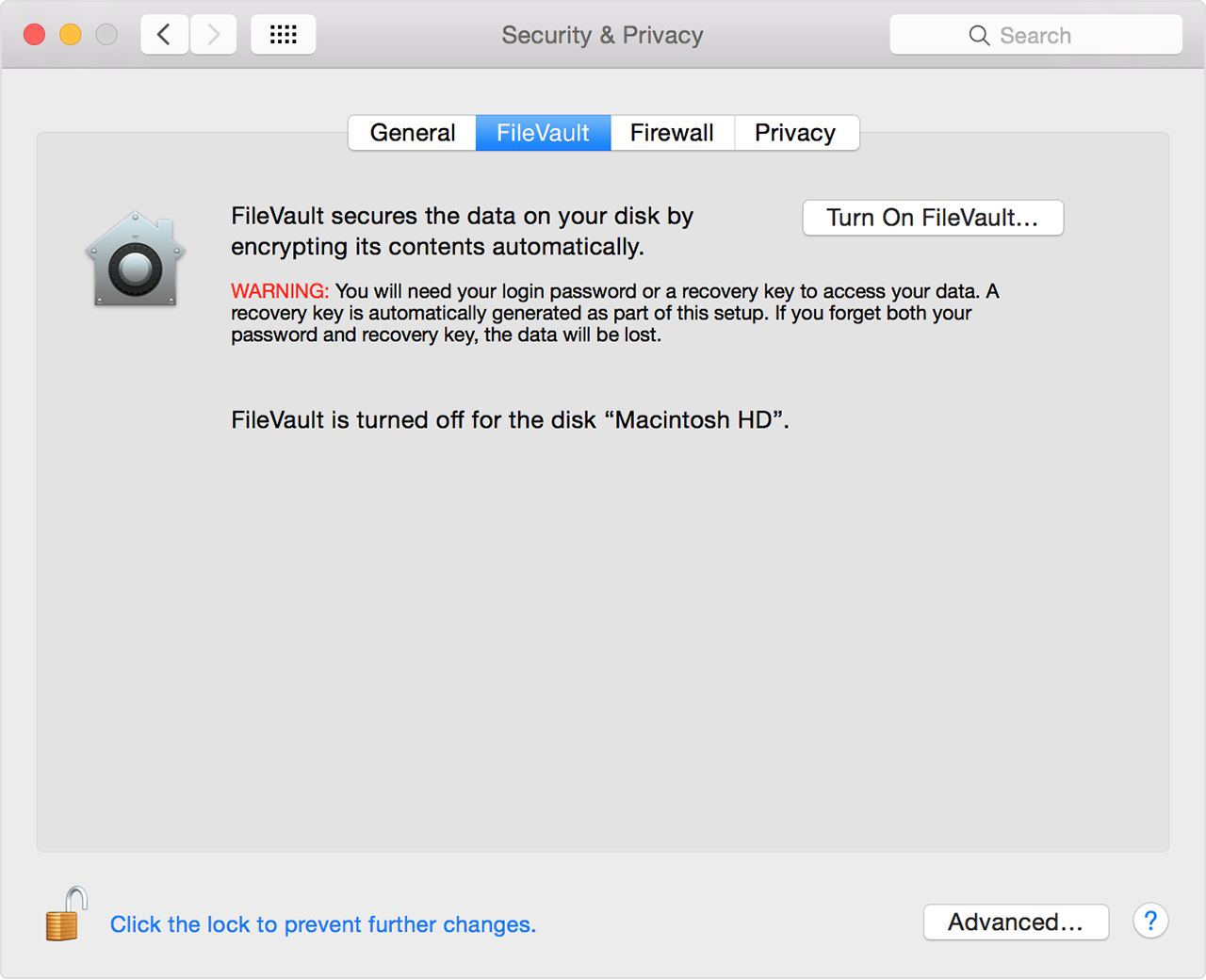
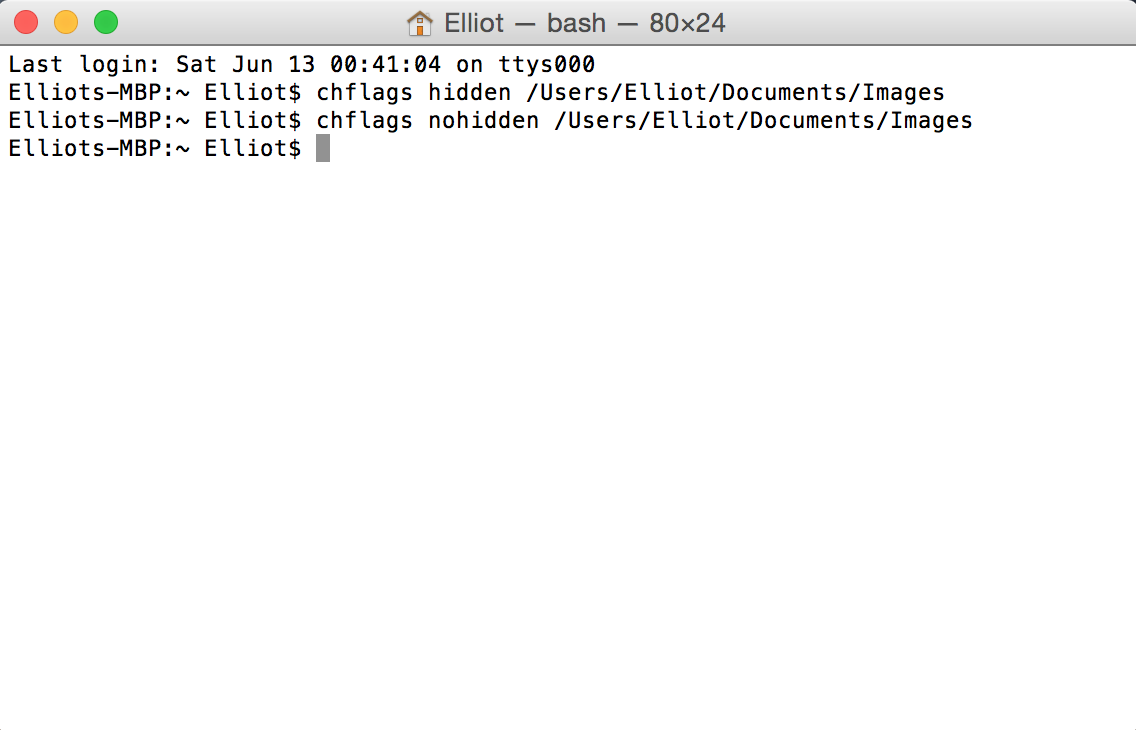

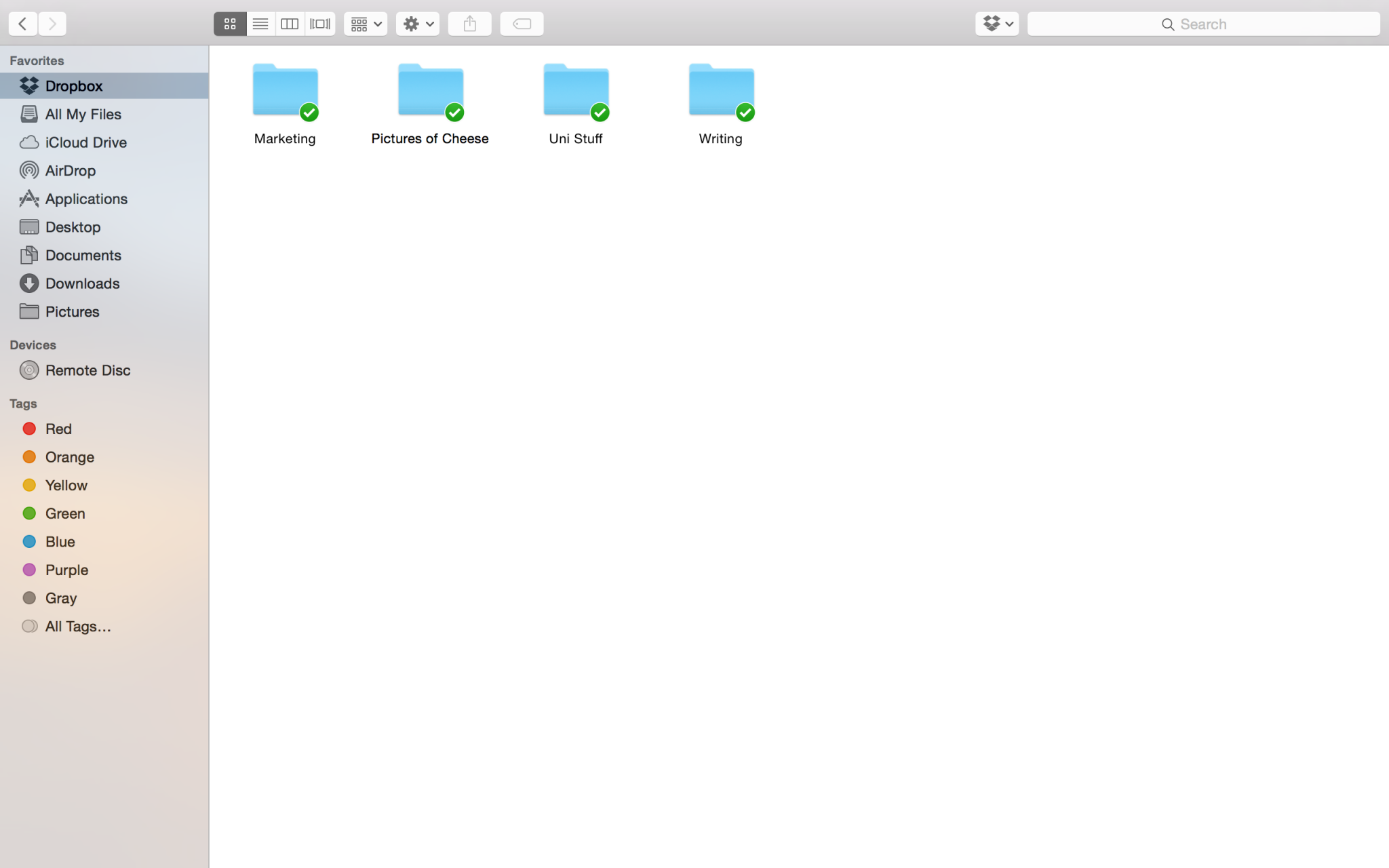



You forgot the oldshool way: make a password protected DMG File out of it 🙂